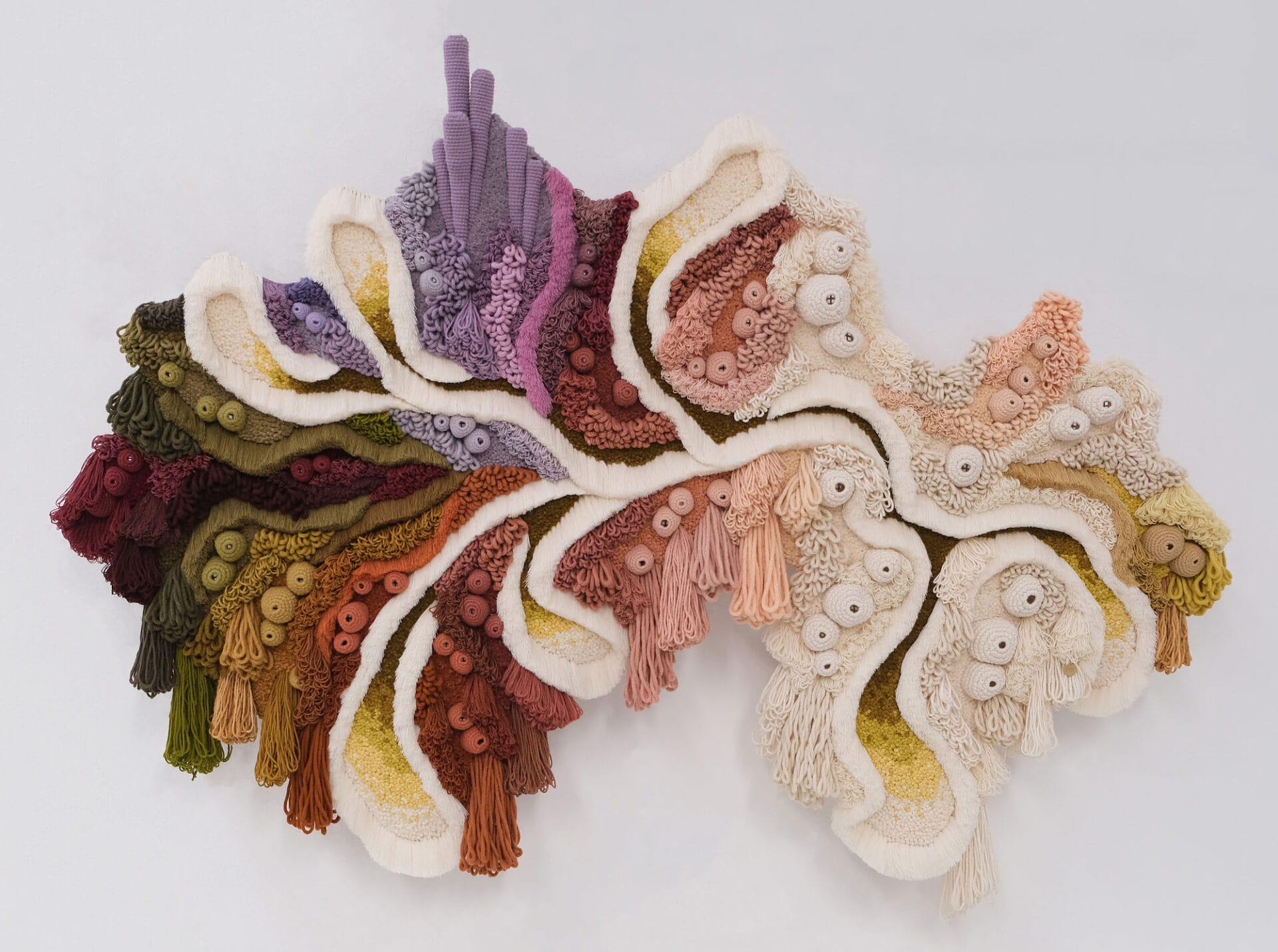This post was originally published on Colossal
All images © Vanessa Barragão, shared with permission
Exploring the fragile forms of ocean ecosystems, Vanessa Barragão continues to create fibrous iterations of coral reefs and marine biomes. Working with a team of studio assistants, she is inspired by environmental stewardship and textile techniques such as latch hooking, crochet, and weaving. Over the course of several weeks to several months, these meditative processes give life to tactile and textural forms.
One of the artist’s most impactful experiences in the last year was a visit to the Raja Ampat Islands. An Indonesian archipelago off the northwest tip of Bird’s Head Peninsula, the area is often referred to as the epicenter of coral diversity, harboring over 600 species. Moved by this grounding encounter, Barragão shares, “Witnessing the fragile beauty and the alarming degradation of the coral reefs firsthand deepened my commitment to environmental themes and intensified my focus on marine conservation through my art.”
Barragão is currently developing a new collection, so stay in the loop via Instagram and the artist’s website.







Do stories and artists like this matter to you? Become a Colossal Member today and support independent arts publishing for as little as $5 per month. The article Vanessa Barragão’s Fibrous Coral Tapestries Unfurl the Delicacy of Marine Ecosystems appeared first on Colossal.





0 Comments